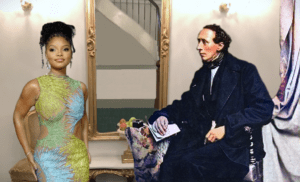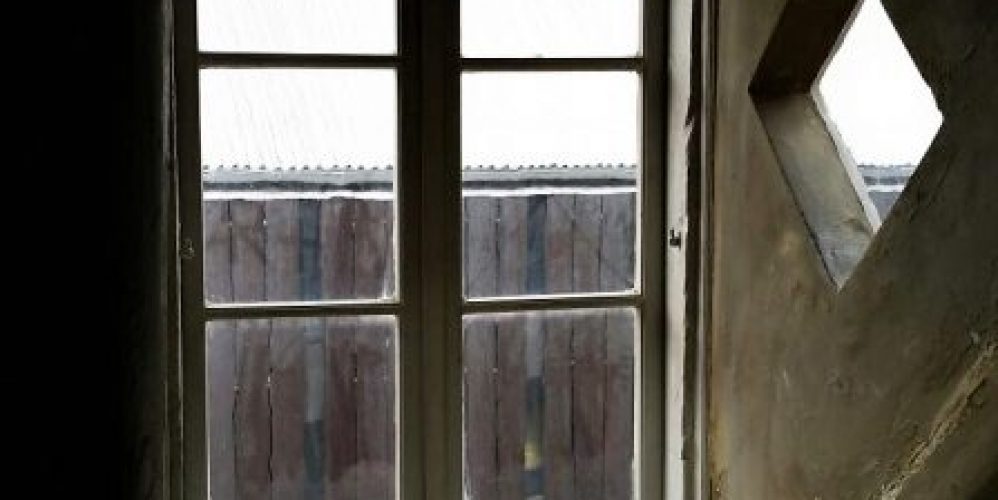Copenhagen is easy to explore on your own. The city is not very large and bicycles are available everywhere. The cycle paths are the best in Europe; an absolute mustsee is the cycle highway Cykelslangen (Cycle Snake) that crosses the water and meanders elegantly between the tall buildings. Yet, many tourists prefer convenient boats and boring sightseeing buses. A tour in a red double decker is recommended as The Little Mermaid Tour. After visiting the old military Kastellet complex, my eye catches the mermaid made by Edvard Eriksen in 1913 . I am lucky enough to have her for myself, at least for a moment. Gracefully she poses on one of the round stones in the crystal clear water that reflects the blue sky.

A cruise ship stops to give its passengers the opportunity to photograph the mermaid. From the shore the stones are being climbed by German children who stay there for such a long time that they undoubtedly will show up on hundreds of pictures. Their parents watch smilingly. How do all these people know The Little Mermaid? From the movie? From the collected fairy tale books? From other circulating pictures? From travel books on Copenhagen? The attention that the statue receives contrasts sharply with the interest in its creator Hans Christian Andersen (1805-1875).

I decide to visit Magasin du Nord, the oldest Scandinavian department store. According to my travel guide, the fairy tale writer hired an attic room in this building which would still be in its original state. Attic rooms are usually on the top floor and I start my quest on the fifth floor. Not one of the doors leads to a possible writer’s residence, but on this top floor is a service center. I ask a friendly lady who seems to know what room I am talking about. “You have to go to the third floor, at the children’s toys. There they will help you.” I thank her and descend two escalators.

I can’t find a children’s section, but at the end of the hall an arrow points upwards to the children’s toys. What does that arrow mean? Straight on or literally upwards? The only option is to climb the staircase and I suspect there an in-between floor. Among the children’s toys, I notice a staff member from the department store and I ask again where I can find the room of the famous fairy tale writer. He looks as if he hears that name fort the first time in his life. He approaches a colleague and asks whether he knows where to find Hans Christian Andersen’s room. “Who told you it should be here?” the second employee asks me. “The service department said that I had to be on the third floor at the children’s toys.” The employee laughs, apparently relieved that he can get rid of me: “This is the fourth floor, you need to go downstairs.”

So I descend the stairs again. The staff clearly does not make me any wiser and I try to find the room myself. One door after another I open, until I recognize a picture of Andersen on a swing door opposite some state-of-the-art Nespresso machines. Behind the door is a meeting room. Is this the historic place? I continue my quest into a dark, narrow corridor. On the right side I can see a small room which is largely seized by a box bed. On both sides of the room are two straight chairs, in an old window sill I see a few sheets of paper and a goose feather that Hans Christian Andersen must have used when he wrote his world-famous stories The Ugly Duckling, Thumbelina, The Snow Queen, The Emperor’s New Clothes and of course The Little Mermaid. A little bit of light falls through the window that looks onto a blind wall. This is where Andersen worked in solitude on his 3300 fairy tales, his travel stories, his novels and his poems. That hardly anyone visits this place, gives this intimate moment at least some magic.
Johan Bakker, 22 October 2017
Picture of Andersen’s window by Rommy Bakker





